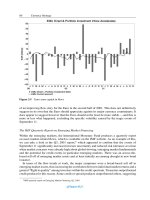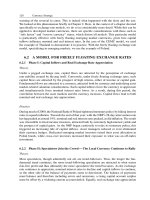Plain English Guide to: Business Rates Retention and the 2013-14 Local Government Finance Settlement pot
Bạn đang xem bản rút gọn của tài liệu. Xem và tải ngay bản đầy đủ của tài liệu tại đây (24.63 KB, 5 trang )
Plain English Guide to:
Business Rates Retention and
the 2013-14 Local Government
Finance Settlement
December 2012
Plain English Guide to Business Rates Retention and
the 2013-14 Local Government Finance Settlement
Introduction
Local government accounts for a quarter of all public spending. This year,
English councils will spend £114.5bn. That’s a bigger budget than the NHS
and twice the defence budget. So it’s vital that councils continue to play their
part in tackling the inherited budget deficit by making sensible savings through
better procurement, shared services and greater transparency, while
continuing to protect frontline services.
Over the past year, councils have called for stability and limited changes, and
we have listened to those concerns. Nearly all other parts of Government and
other local services are facing a further one per cent reduction in funding next
year. Local government has been protected from that in order to give councils
time to transform service delivery and make the savings needed for the future.
This is the first financial settlement that reflects the entirely new financial
relationship between central and local government. We have ended the
complex and unfair system which redistributed the proceeds of local growth
which meant councils had no incentive to support local businesses, and which
encouraged a ‘begging bowl’ mentality that kept them dependent on central
government. For the first time in a generation, local government will get a
direct financial benefit from helping to deliver local business growth. Councils
will now be able to keep half of any increases in business rates to invest
locally. Over the next seven years, this has the potential to add £10bn to the
national economy.
Most importantly of all, this is a fair settlement which protects hard working
families and the most vulnerable. For the third year in a row, we are providing
funding so that all councils can freeze council tax and help families with the
cost of living. Decisions about funding have been carefully calculated so that
it fairly reflects the different needs of different parts of the country – rural and
urban, north and south. The average reduction in spending power is 1.7 per
cent with no council seeing a reduction of more than 8.8 per cent as a result
of efficiency support grant.
Why have we changed the system?
The local government finance system is one of the most centralised in the
world with councils getting more than half of their income from a central
government grant. Under the existing system, all businesses - shops, offices,
warehouses and factories - pay a tax to their local council (called business
rates). Although the local council collects this tax, it doesn’t keep the money.
It goes into a Treasury pot and is then redistributed back to local authorities,
via an extremely complex formula.
There are a number of problems with the current arrangements. It fails to
reward councils at all for increasing and supporting business in their area. No
matter how many new businesses start up in their locality, councils don’t get a
penny extra. They could even lose out for having to stump up the cost of
providing additional services to new companies. Instead of encouraging
businesses, the system encourages a ‘begging bowl’ mentality with councils
looking to be rewarded for being worse off. It’s a system in need of reform.
The Government is giving councils more freedoms and flexibilities, because
we want to reduce Whitehall interference and give more power to local
people. We also want to give councils stronger incentives to create and
support local jobs and local firms.
So we are shifting more financial power from Whitehall to the town hall,
allowing councils far greater influence over the money they collect. An
estimated 70 per cent of local authority income will now be raised locally
compared to about half under the existing arrangements. Overall, councils
will get to keep 50 per cent of all business rates growth, giving them a real
incentive to go for growth and encourage enterprise and job creation. If
economic activity increases, the total amount of money raised from business
rates will grow too. This means there will be more money ‘in the pot’ for
councils to invest in local services.
Councils will also have much greater flexibility to pool their business rates to
encourage growth across their areas. The scheme also enables local
authorities to borrow money against future business rate growth to fund
infrastructure projects in their area.
Protecting all councils
Some councils collect a lot more business rates than others. So we are
evening up the odds to encourage enterprise in councils whatever their
starting position through a system of top ups and tariffs. Authorities who have
more business rates than their baseline funding level will pay a tariff to
Government. This will be used to fund top-up payments to those authorities
whose business rates are less than their baseline funding levels.
Similarly, there are some councils who currently have lots of business
property and who will be able to make large gains for relatively small
investment in further growth. Conversely other councils which are starting
from a low level of business rates revenue might see only relatively small
returns for bold and imaginative investment decisions.
Where a council's increase in revenue from business rates outstrips the
increase in its funding level, it will pay a levy on that disproportionate benefit.
This will be used to fund a safety net, providing support to councils whose
business rates receipts fall by more than 7.5 per cent below their baseline
funding level.
Government is capping the levy at 50p in every £1 of growth to ensure that a
strong economic incentive remains for all councils.
The baseline will be uprated each year to take account of inflation, but apart
from this, the Government does not intend to reset the system before 2020.
This will give local government the stability and certainty they need to support
long-term investment decisions and promote economic growth.
The new system of business rates retention is part of an overall framework of
incentives and support for councils to go for growth. Further reforms provide
councils with further rewards for growth:
• £650m under New Homes Bonus next year to reward councils for house
building
• £1bn in Community Infrastructure Levy,
• a £2.6bn regional growth fund, and
• a £770m growing places fund to support local infrastructure
Alongside new powers, freedoms and flexibilities, this financial system frees
councils from their historic dependence on central government and gives them
the ability to invest in and support the needs of their local communities –
without being told what to do.
Supporting the most vulnerable communities
Government grant is, of course, not the only way that councils receive their
money. A local council has income from various sources, from business rates
through the new retention system, fees and charges and from the local
council tax. The Government has looked at these funding sources in the
round in assessing the relevant spending power of each council. It has taken
account of council income from council tax, start-up funding assessment,
grants, and money that is coming from the NHS to support social care and
benefit health. It is therefore fairest and most accurate to look at a council’s
overall ‘spending power’ rather than simply their grant levels.
Through an Efficiency Support Grant, we will ensure no council sees their
overall spending power decrease by more than 8.8 per cent. We have also
retained the ‘damping’ system which protects councils from sharper grant
reduction they would otherwise have had. There are four ‘damping’ floors,
grouping councils by their relative reliance on government grant. This year,
those floors have been altered to ensure that the councils who are most
dependent get the most support and protection.
How can councils respond?
Looking towards 2014/15 and beyond, councils need to continue to think of
new ways to find and deliver savings while protecting local services and
delivering value for money for the tax payer. Local government has already
delivered many savings but more can be found by more councils. Councils
should learn from each other to route out the savings which are so keenly
needed. There are already many examples through procurement savings,
shared offices, services or though increasing local tax collection rates and
cutting fraud which allows councils to deliver more for less. The Government
has published a document “Fifty Ways to Save” to assist local government in
identifying savings.
What do these proposals mean for you?
Local residents should see greater investment in local services as authorities
benefit from increased business rates revenue; will be protected if their
council experiences a significant downturn; and we expect that the vast
majority will benefit from council tax bills being kept down for a third
successive year.
Businesses will see no change in the way their business rate bills are
calculated, but have a much greater incentive to work with local councils in
making the right business decisions for their area.
Charities and voluntary groups which currently receive tax relief on their
business rates bills will see no change as this relief will continue under the
new system.
Councils will have much greater incentive to promote economic growth in
their areas and much greater certainty about their future funding - allowing
them to plan ahead, manage risk, budget for the long term and plan for worst
case scenarios. They will also want to work more closely with the Valuation
Office Agency (the body which helps calculate the amount of business rates
that firms should pay) to ensure local firms are having their properties valued
correctly and paying the right amount of tax.
Developers will benefit from councils actively seeking to encourage
appropriate and well-planned business development.
The police will continue to be funded through a central government grant and
therefore will not be affected by fluctuations in business rates in their area.
All single purpose fire and rescue authorities will be funded through a two
percent share of each district or borough council’s business rates income, and
topped up by central government.
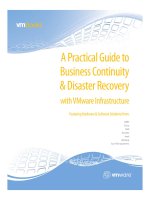
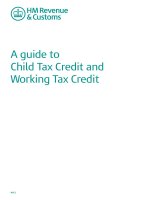


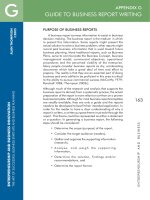


![mastering xpages [electronic resource] a step-by-step guide to xpages application development and the xsp language](https://media.store123doc.com/images/document/14/y/qq/medium_DPKG45QsoC.jpg)
